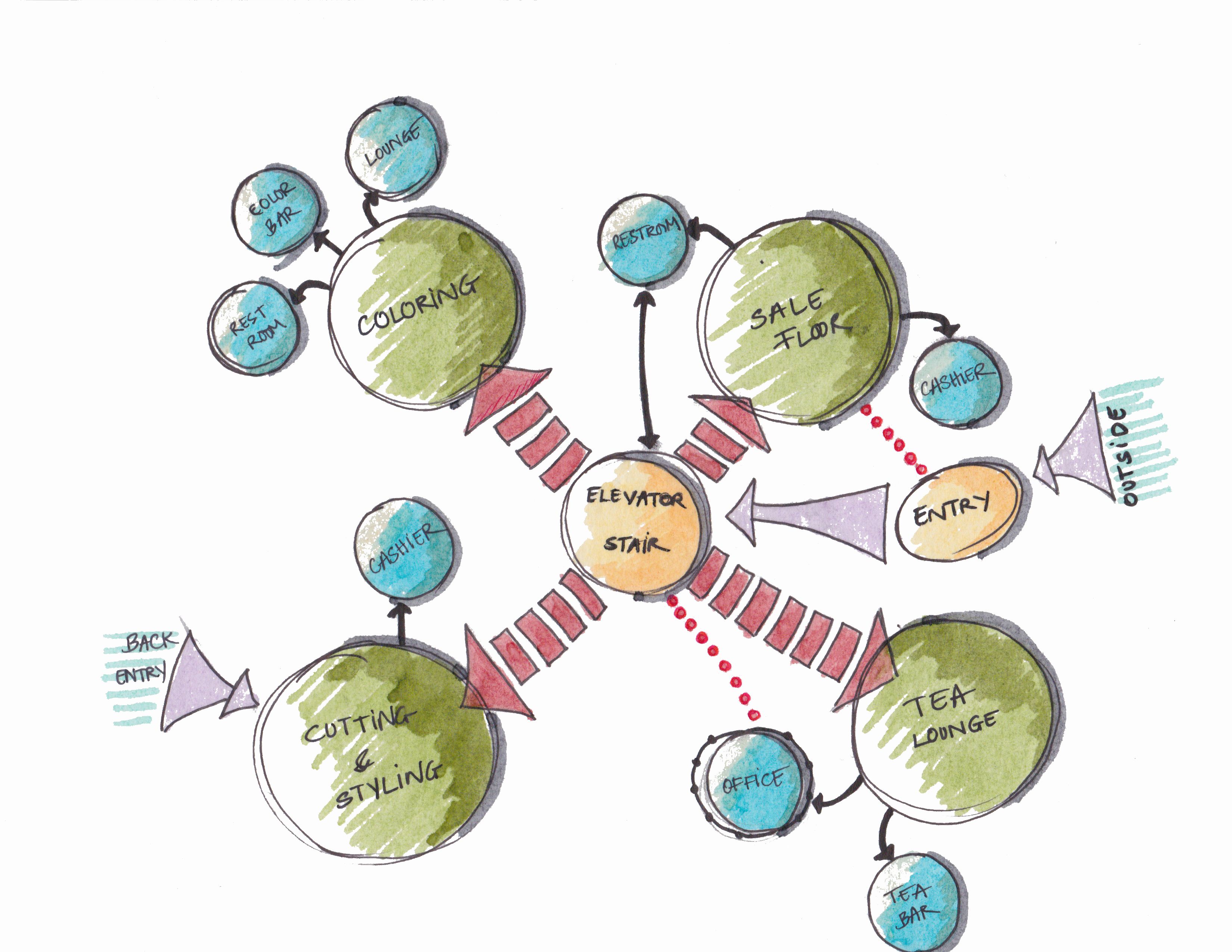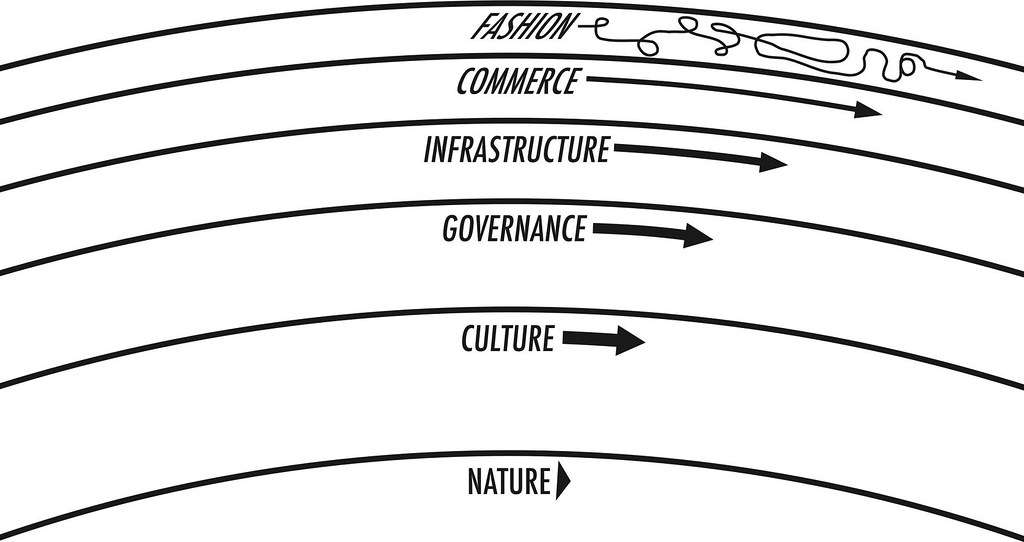Living in Information

Jorge Arango's main call on this book is to change, or broaden, the framing we use to design. Instead of thinking about “products” or “services”, we should think about designing “information environments”. He borrows various patterns from architecture, urbanism, and placemaking to help inform how we should design environments where people create, share, consume, and interact with information.
The things we create in the technology industry are not just products. They’re information environments that change how people behave, act, choose, and believe. Calling them products grossly underestimates their impact.
This broadening of the designer's lens is similar to the mindset on Thinking in Systems.
1. Environments
- We’re not designing just tools or products to be used, but environments to be inhabited.
- When people are navigating new environments, they bring biases and expectations from other contexts. When they're navigating digital environments, they bring in assumptions from architecture and physical spaces.
- Places serve two levels of needs:
- Physical functions (shelter, heating, privacy)
- Symbolic functions (cultural identity, memories)
- Information is anything that reduces the uncertainty about a prediction’s outcome.
- Designing software should be like placemaking: focus on the outcomes and behaviors rather than the forms or interactions.
2. Context
- In architecture, people look around for affordances to tell them what behaviors are accepted and expected.
- Affordances are not inherent of objects. They’re a relationship between the person, the context, and the object.
- When we create digital spaces, we need to nurture the semantic environment:
- Shared goals - Help people understand the purposes for that space
- Shared vocabulary - Help people talk the same language and use the same symbols
- Shared social constructs - Help people understand what the rules of interaction are.
3. Incentives
- Factors that drive incentives in environments:
- Power
- Incentives imply an imbalance of power. Those who give incentives have higher power than those who receive it.
- Identity
- Having a stable identity is key to social constructs of trust.
- If not, people are shielded from the long-term consequences of their actions.
- Identity doesn’t need to be tied to identity in the real world. Enforcing true identities may problems for oppressed and minorities who can’t expose themselves when communicating.
- This was one of the core insights behind our choice to give Birdwatch users an alias . See birdwatch-aliases
- Transparency (feedback)
- Participants need a way to know how they're doing given the incentives they’re looking to obtain.
- Progress tracking and information about how to improve.
- Aligned incentives
- Users might lack the sophistication to realize the incentives are misaligned with the service provider. So those in power (designers) need to ensure incentives are aligned.
4. Engagement
- Attention is the most precious resource we have. Most products today have business models that require us to shift attention from what matters — versus helping us focus on what matters.
- You make decisions based on the stream of things you choose to pay attention to. These decisions eventually form your identity and your beliefs.
- Jorge adresses misinformation in this chapter. He has a very interesting example of the "First misleading ad" from The Sun newspaper, from 1835.

- When we enter an environment with the goal of connecting to other people, but the business model has the goal of selling us ads, our incentives are misaligned from the start.
- Arango says Google is less of a problem, because he already uses the tool to find stuff, and ads is just a way to find stuff. I’m not sure I agree with this, since the incentives are misaligned to serve you the highest bidder, not the most relevant results.
5. Technology
- Blockchain can help us create “instant trust” with other people we don’t know since their whole history of interactions is recorded.
6. Architecture
- The things we create in the technology industry are not just products. They’re information environments that change how people behave, act, choose, and believe. Calling them products grossly underestimates their impact.
- Definiton of design:
- When many people think of design, they think it’s a thing things have. As in “this thing has good design”. But that’s a misunderstanding; design is not inherit to objects, it’s more a verb (process) than a noun.
- Design is a way to envision and test future possibilities without incurring the costs of building the real thing. It allows us to experiment in different levels of fidelity to find the best fit with the problem, before we commit to the final solution.
- Design deals with requirements, and often they’re in conflict with each other. It’s the designers job to make choices about how the requirements should be balanced.
- Characteristics of a place:
- Function
- Ergonomics
- Understandability
- Quality
- Coherence
- Fit
- Resilience
7. Structure
- Structure is understanding that people perceive parts as a whole, depending on how they’re organized.
- First identify the parts, then the relationship between them.
8. Systems
- Looking at “the big picture”. Before designing UI, look at the structure and how information, agents flow in it.
- Architects use "bubble diagrams" to understand an environment before they start designing the actual layout of the place:

- Cohesive set of actors and parts working towards the same goal
- Characteristics:
- Goals
- Resources that flow
- Feedback mechanisms
- Boundaries — it ends at some point.
- Needs for success:
- Clear goals
- Clarity on how they're measured
- Clear feedback
- Gall’s law:
- A complex system that works has evolved from a simple system that works. No successful system can be designed from a complex system that isn’t working. You have to start from scratch with a simple one that works.
9. Sustainability
- Environments must accommodate change, but without making their users feel lost. It must balance innovation and governance. It must keep its primary purpose solid.
- In order to design sustainable systems:
- Team must have a healthy attitude toward change.
- Awareness of what is happening in and outside the environment.
- Empowered to make changes
- Clear vision of purpose so changes don’t undermine the environment’s goal.
- Structure must support gradual change. The design can’t be brittle to start with.
- Brand’s “pace layers”:

- Some layers change faster, some more slowly.
- Jorge Arango adapted this to information environments:
- Form
- Structure
- Governance
- Strategy
- Purpose
10. Gardening
- Instead of thinking about design as a complete plan of the thing to be built, we should think about it as gardening: we put the seeds in an orderly manner, but have to observe what blooms naturally.
- Gardens are designed structurally, but the final form is not dictated, it emerges.
- Characteristics
- Unfinished
- Collaborative
- Diverse
- Robust (easy to revert changes, flexibility)
- Think of a tree: the trunk is solid but the branches are flexible
- Reputable
- Hierarchy and reputation are managed and provide different layers of control.
- Transparent
- Actors should understand what is going on at all times.
- Recursive
- Actors must have a degree of freedom to change the environment itself, not only the content within it.
- Led
- Led by people who are invested in the long-term success, not short-term incentives.
- Cohesive
- Everyone understands why they’re there and how to go about achieving the end goal.



